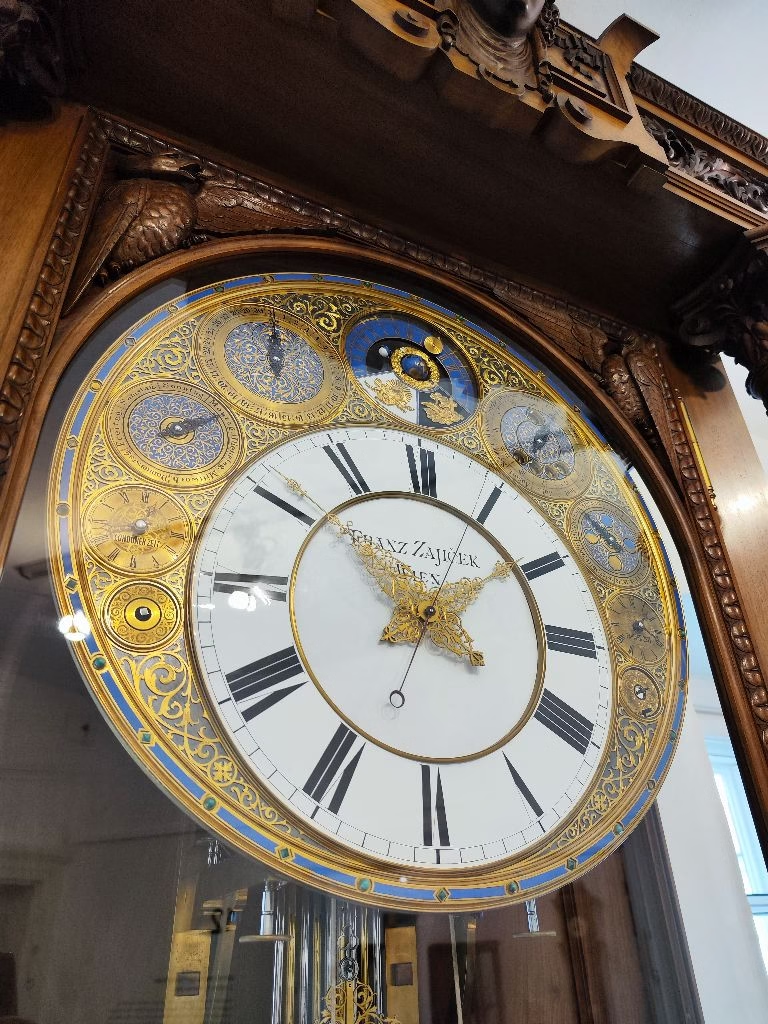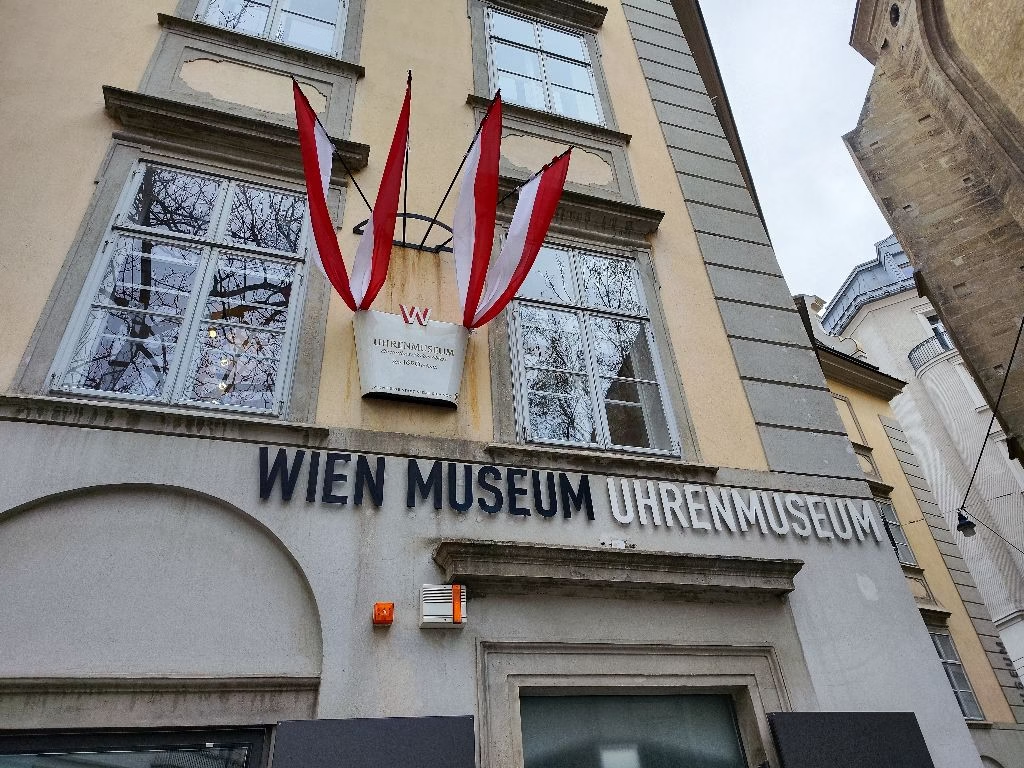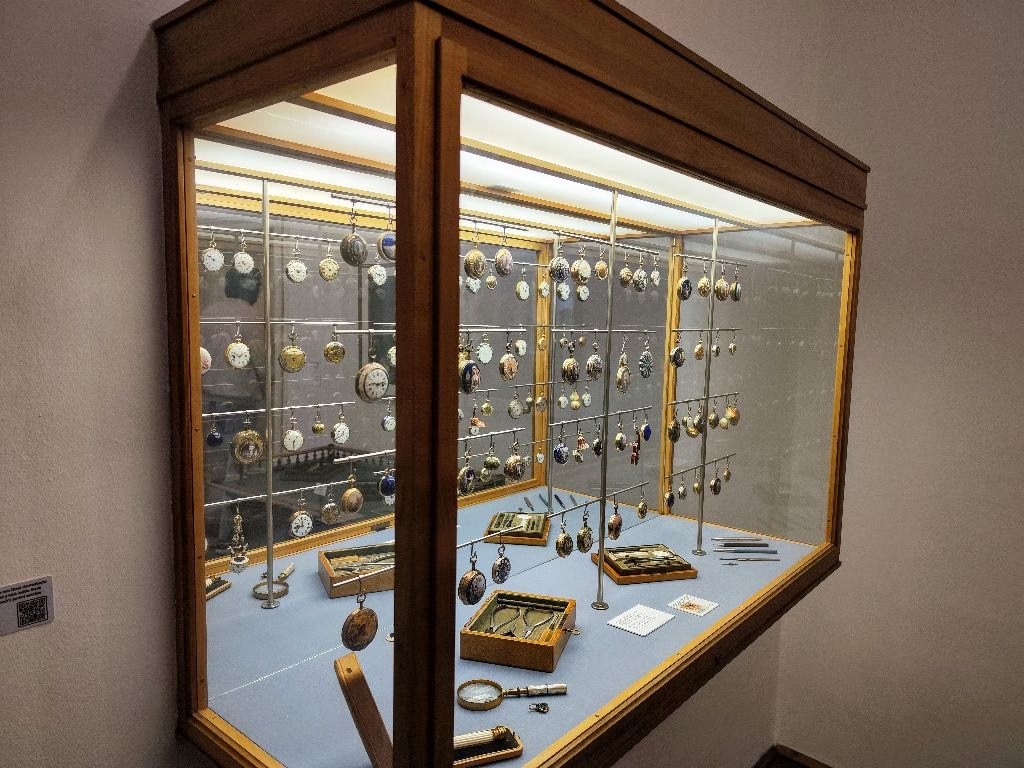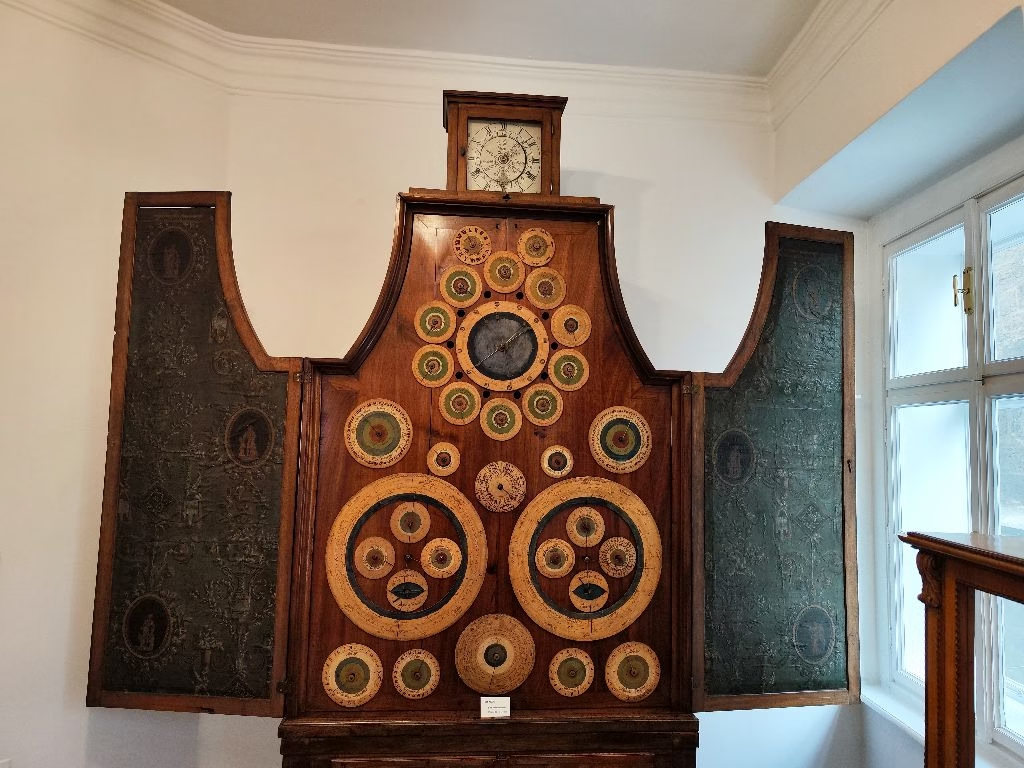
Vienna Clock Museum
Address
Schulhof 2, 1010 Vienna
GPS
48.2108569, 16.3693285
Just steps away from the city center, the Vienna Clock Museum invites you to explore centuries of timekeeping history through an impressive collection of unique clocks. As you wander among beautifully crafted pieces, you’ll discover fascinating stories about how people have measured time throughout the ages. Your visit is perfect if you love intricate designs and mechanical wonders. The museum is open daily and offers affordable admission, making it an easy addition to your Vienna itinerary. Don’t miss this chance to see time in a whole new way!
Key Takeaways:
- The Vienna Clock Museum showcases an extensive collection of clocks spanning several centuries, highlighting the evolution of timekeeping devices.
- Located in the historic First district, the museum is easily accessible and offers both guided tours and self-exploration options for visitors.
- Visitors can enjoy affordable entry fees and benefit from convenient opening hours, making it a great cultural destination throughout the year.
🕰️ Vienna Clock Museum – Visitor Guide
📍 Location
Address: Schulhof 2, 1010 Vienna, Austria
Nearest Metro: U3 Herrengasse (5-minute walk)
🕒 Opening Hours
-
Tuesday to Sunday: 10:00 AM – 6:00 PM
-
Closed on Mondays
🎟️ Tickets (2025 Prices)
-
Adults: €8
-
Seniors, Students: €6
-
Under 19: Free
-
Vienna Pass & Wien Museum Annual Pass: Free entry
🧭 What to Expect
-
3 floors packed with over 700 clocks: from ornate baroque pieces to minimalist 20th-century designs.
-
Rare finds include:
-
A 17th-century astronomical clock
-
One of the oldest Viennese turret clocks
-
Early pocket watches and musical clocks
-
-
The building itself is a 17th-century townhouse, adding historic charm.
🔔 Highlights
-
Chiming demonstrations at set times (usually on the hour)
-
Interactive displays on clock mechanisms
-
Focus on Austrian horology, especially Vienna’s own “Laterndl clocks”
🛍️ Gift Shop
Small but full of quirky, time-themed items: mini clocks, books, and souvenirs.
📝 Tips
-
Visit early to catch the chimes and avoid crowds.
-
Audio guide available in multiple languages.
-
Allow 1 to 1.5 hours for a full visit.
-
Combine with nearby sights like St. Peter’s Church or the Jewish Museum.

Types of Clocks to Discover
While exploring the Vienna Clock Museum, you will find a remarkable variety of clocks showcasing both art and technology, including:
- Grandfather clocks
- Cuckoo clocks
- Wall clocks
- Pocket watches
- Mantel clocks
| Clock Type | Description |
| Grandfather Clock | Tall pendulum clocks with ornate designs |
| Cuckoo Clock | Wooden clock with mechanical bird calls |
| Wall Clock | Various sizes mounted on walls |
| Pocket Watch | Portable, elegant timepieces in cases |
| Mantel Clock | Small clocks designed for shelves or mantels |
The museum offers an immersive way to admire these timeless treasures.
Historical Clocks
To examine your past fascination with time, the museum presents a stunning range of historical clocks that span centuries. You will find intricate craftsmanship from the 17th and 18th centuries, reflecting the evolution of mechanical design and artistry. These clocks not only tell time but also tell stories about Vienna’s rich history and clockmaking heritage. The detailed workmanship in these pieces offers you a unique glimpse into an era when timekeeping was both an art and a science.
Modern Timepieces
Clocks in the museum’s modern collection showcase technological advances and sleek contemporary designs. These timepieces highlight innovation in precision as well as style, allowing you to appreciate how horology has adapted to changing tastes and needs. From minimalist digital watches to advanced mechanical movements, the varied collection gives you a glimpse of the future of timekeeping.
This modern collection highlights how technology and design merge to create timepieces that are not only highly accurate but also visually captivating. You can see how new materials and digital mechanisms have revolutionized the way you wear and use clocks today. The exhibition makes it clear that modern timepieces are as much about form as they are about function, making your visit both educational and inspiring.
Tips for Your Visit
The Vienna Clock Museum offers a fascinating glimpse into horology, so make the most of your trip by planning ahead. Consider these tips:
- Arrive early to avoid crowds and enjoy the exhibits peacefully.
- Check the opening hours to sync your visit comfortably.
- Buy your tickets in advance to skip lines.
- Wear comfortable shoes for walking through the museum.
After your visit, explore related insights and history at Vienna Clock Museum: Top Sites, Location, History … for a deeper understanding.
Best Times to Go
To have a more relaxed visit, plan your trip during weekdays when the museum tends to be quieter. Mornings right after opening are ideal for avoiding crowds. Also, consider visiting outside of public holidays, as popular times can get crowded. This way, you can fully immerse yourself in the fascinating clock exhibits.
What to Bring
An vital part of your trip includes bringing a camera or smartphone to capture unique timepieces. Also, bring a small notebook or app for jotting down details, especially if you’re fascinated by clock designs and history. Don’t forget to carry a lightweight bag to comfortably hold your belongings throughout your visit.
For instance, a compact camera helps you capture intricate clock details, while a notebook allows you to note interesting facts or timings for guided tours. Bringing a bottle of water and some snacks can keep you energized, since the museum doesn’t have extensive food options. These small preparations enhance your overall experience at the Vienna Clock Museum.

Step-by-Step Guide to Navigating the Museum
After arriving, you can easily explore the Vienna Clock Museum by following a clear path through its fascinating collections. Start your visit at the entrance, then move through the thematic rooms at your own pace. For detailed tips, check out Clock Museum (Vienna) – Visitor Information & Reviews for up-to-date advice and reviews.
| Starting Point | Entrance & Ticket Desk |
| Key Sections | Antique Clocks, Mechanical Wonders, Modern Timepieces |
| Tips | Use provided maps and follow signs for smooth navigation |
Entry Process
Process your entry by purchasing tickets at the reception; you’ll find friendly staff ready to assist you. Make sure you have your ID or appropriate discount cards if applicable. After that, you can grab a map and start your fascinating journey into the history of timekeeping without delay.
Must-See Exhibits
One highlight is the collection of intricate Viennese regulator clocks, showcasing perfect craftsmanship from the 18th century. You’ll also find fascinating pocket watches and astronomical clocks that mesmerize visitors with their complexity and beauty.
With over 1,000 clocks on display, the museum offers a deep investigate clockmaking history. Don’t miss the striking mechanical figures that animate the exhibits, bringing timepieces to life. While exploring, be mindful of the fragile and rare artifacts that require careful viewing.
Factors to Consider Before Visiting
Now, before you plan your trip to the Vienna Clock Museum, keep a few key points in mind.
- Check the opening hours to avoid arriving when it’s closed.
- Review the entrance price to prepare your budget.
- Consider the location for easy travel planning.
- Look up interesting exhibits or facts to enhance your visit.
Knowing these factors helps you make the most of your museum experience.
Accessibility
Before you visit, it’s important to consider the accessibility features of the museum. The museum offers ramps and elevators to support visitors with mobility needs. Staff are available to assist if required, making it easier for you to enjoy the exhibits fully.
Apart from physical access, the museum provides clear signage and seating areas to rest between rooms. If you have sensory sensitivities, some exhibit areas might be busy or noisy during peak hours. Overall, the Vienna Clock Museum strives to create a welcoming environment for all visitors, so you can comfortably explore the fascinating world of clocks.
Pros and Cons of the Vienna Clock Museum
Keep in mind both the advantages and limitations of visiting the Vienna Clock Museum to make the most of your trip. Here’s a quick overview to help you decide:
| Pros | Cons |
|---|---|
| Extensive collection of historic clocks | Small museum space can feel crowded |
| Informative exhibits on clockmaking history | Limited opening hours |
| Affordable ticket prices | Some exhibits have minimal English descriptions |
| Free guided tours on certain days | Not ideal for young children |
| Beautiful historic building setting |
Highlights of the Museum
If you love history and intricate craftsmanship, the Vienna Clock Museum offers fascinating exhibits including clocks dating back several centuries. You’ll enjoy exploring the development of clockmaking through innovative designs and rare pieces, all housed within a charming historic building that adds to the experience. It’s perfect for anyone interested in timekeeping and art combined.
Potential Drawbacks
Potential visitors should be aware that the museum’s limited opening hours may require some planning. Its somewhat small size can make weekends busy, and some information is only available in German. These factors might affect your visit if you’re looking for extensive, multilingual displays or a spacious, relaxed environment.
It’s helpful to plan your visit during less crowded times or check if guided tours are available in your language. While the museum might feel compact, the quality and uniqueness of its pieces usually outweigh these minor inconveniences.

Nearby Attractions
Unlike other museums that focus on broad themes, the Vienna Clock Museum offers a unique glimpse into horology, but you can also explore many nearby sites to enrich your day. For detailed information on visiting, check out Clock Museum – Opening times, prices and location in Vienna. After immersing yourself in the world of clocks, why not wander through nearby parks or historic streets to fully appreciate Vienna’s charm?
Restaurants and Cafés
With many cozy spots within walking distance, you can easily refuel after exploring. Whether you prefer traditional Viennese pastries or hearty meals, nearby cafés and restaurants provide inviting atmospheres and delicious menus to satisfy your hunger.
Attractions near the Vienna Clock Museum include tranquil parks and lively squares where you can relax and absorb local culture. Staying aware of busy traffic areas is important as you navigate between spots, but you’ll find the area safe and friendly. Many restaurants showcase authentic Austrian dishes, giving you a tasty chance to discover more of Vienna’s culinary heritage while staying close to the museum.
Conclusion
As a reminder, visiting the Vienna Clock Museum offers you a fascinating journey through the history and craftsmanship of timekeeping. Whether you’re a history buff or simply curious, you’ll enjoy exploring the diverse collection and learning about the unique clocks on display. With its convenient location and reasonable admission, the museum provides a delightful experience for your day in Vienna. Be sure to check the opening hours before you go, so you can make the most of your visit to this unique cultural gem.
FAQ
Q: What are the opening hours of the Vienna Clock Museum?
A: The Vienna Clock Museum is open from Tuesday to Sunday, 10:00 AM to 5:00 PM. It remains closed on Mondays and public holidays. Visitors are advised to check the museum’s official website for any special closures or changes in schedule.
Q: How much is the admission fee for visiting the Vienna Clock Museum?
A: The admission fee for the Vienna Clock Museum is €8 for adults. Reduced tickets priced at €5 are available for students, seniors, and groups of ten or more. Children under 12 years can enter free of charge. Family tickets and guided tours may require advance booking.
Q: What can visitors expect to see and learn at the Vienna Clock Museum?
A: Visitors to the Vienna Clock Museum can explore an extensive collection of timekeeping devices dating from the Middle Ages to the modern era. The exhibits include intricate mechanical clocks, historic pocket watches, and unique pendulum clocks. The museum offers insights into the evolution of horology, craftsmanship, and the scientific principles behind accurate time measurement.
